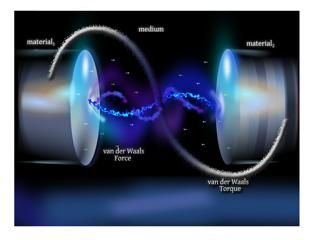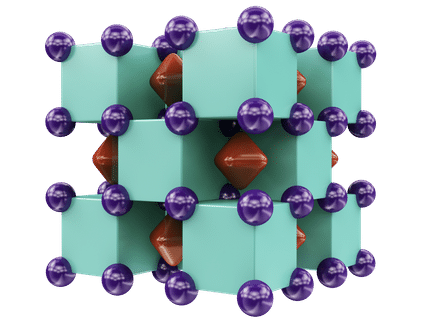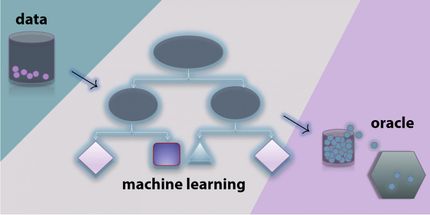Characterizing the forces that hold everything together
Physicists offer new open source calculations for molecular interactions
Advertisement
As electronic, medical and molecular-level biological devices grow smaller and smaller, approaching the nanometer scale, the chemical engineers and materials scientists devising them often struggle to predict the magnitude of molecular interactions on that scale and whether new combinations of materials will assemble and function as designed.

UMass Amherst physicists, with others, provide a new software tool and database to help materials designers with the difficult calculations needed to predict the magnitude of van der Waals interactions between anisotropic or directionally dependent bodies such as those illustrated, with long-range torques. Though small, these forces are dominant on the nanoscale.
UMass Amherst
This is because the physics of interactions at these scales is difficult, say physicists at the University of Massachusetts Amherst, who with colleagues elsewhere this week unveil a project known as Gecko Hamaker, a new computational and modeling software tool plus an open science database to aid those who design nano-scale materials.
Adrian Parsegian, Gluckstern Chair in physics, physics doctoral student Jaime Hopkins and adjunct professor Rudolf Podgornik on the UMass Amherst team report calculations of van der Waals interactions between DNA, carbon nanotubes, proteins and various inorganic materials, with colleagues at Case Western Reserve University and the University of Missouri who make up the Gecko-Hamaker project team.
To oversimplify, van der Waals forces are the intermolecular attractions between atoms, molecules, surfaces, that control interactions at the molecular level. The Gecko Hamaker project makes available to its online users a large variety of calculations for nanometer-level interactions that help to predict molecular organization and evaluate whether new combinations of materials will actually stick together and work.
In this work, Parsegian and colleagues say their open-science software opens a whole range of insights into nano-scale interactions that materials scientists haven't been able to access before.
Parsegian explains, "Van der Waals forces are small, but dominant on the nanoscale. We have created a bridge between deep physics and the world of new materials. All miniaturization, all micro- and nano-designs are governed by these forces and interactions, as is behavior of biological macromolecules such as proteins and lipid membranes. These relationships define the stability of materials."
He adds, "People can try putting all kinds of new materials together. This new database and our calculations are going to be important to many different kinds of scientists interested in colloids, biomolecular engineering, those assembling molecular aggregates and working with virus-like nanoparticles, and to people working with membrane stability and stacking. It will be helpful in a broad range of other applications."
Podgornik adds, "They need to know whether different molecules will stick together or not. It's a complicated problem, so they try various tricks and different approaches." One important contribution of Gecko Hamaker is that it includes experimental observations seemingly unrelated to the problem of interactions that help to evaluate the magnitude of van der Waals forces.
Podgornik explains, "Our work is fundamentally different from other approaches, as we don't talk only about forces but also about torques. Our methodology allows us to address orientation, which is more difficult than simply describing van der Waals forces, because you have to add a lot more details to the calculations. It takes much more effort on the fundamental level to add in the orientational degrees of freedom."
He points out that their methods also allow Gecko Hamaker to address non-isotropic, or non-spherical and other complex molecular shapes. "Many molecules don't look like spheres, they look like rods. Certainly in that case, knowing only the forces isn't enough. You must calculate how torque works on orientation. We bring the deeper theory and microscopic understanding to the problem. Van der Waals interactions are known in simple cases, but we've taken on the most difficult ones."





































































